Spectator sports are back on track, and with actual spectators in tow. It’s time to rediscover the joy of nailing the action and capturing definitive moments – or maybe trying something completely new if you’ve never been into sport photography before. Pretty much any DSLR or mirrorless body will suffice – but when it comes to a suitable lens, it pays to choose wisely.
One thing that practically always holds true is that, if you’re not fortunate enough to have a media pass, you’ll be shooting sport from a spectators’ enclosure, and probably won’t be able to get as close to the action as you might like.
True, with some sports you can use a wider, less-telephoto lens. And it is also true that professional photographers will shoot lens with long telephoto prime lenses with wide maximum apertures – often costing over $10,000 a piece. But for this guide, we have restricted ourselves to mid-priced zoom lenses that will give you the reach you need for most sporting occasions.
To cover the distance, super-telephoto lenses are the order of the day. Let’s see what’s on offer for different camera systems, with their various interchangeable mounts…
Best lens for sport photography: Canon

The Canon EF 100-400mm f/4.5-5.6L IS II USM has long been a favorite with Canon DSLR shooters, with the Mk II edition having a twist-ring zoom mechanism, rather than a push-pull arrangement. The RF 100-500mm for EOS R-series mirrorless cameras follows suit, also inheriting the smooth control ring.
Handling is refined, with a triple-mode, five-stop image stabilizer, a customizable control ring, and an autofocus-range limiter switch.
Helped by the inclusion of six UD (Ultra-low Dispersion) elements, one Super UD element, and Air Sphere Coating, image quality is excellent. The image stabilizer lives up to its claims on EOS R and RP cameras, and its effectiveness is further boosted when combined with the in-body stabilizers of newer EOS R-series cameras.
See our full Canon RF 100-500mm review.

Tamron’s original 150-600mm was a good lens, but the newer G2 edition is a major upgrade. Two additional Low Dispersion elements are fitted and secondary nano-structure coatings are applied, along with better weather-seals and a fluorine coating on the front element.
New and improved VC (Vibration Compensation) is rated at 4.5 stops, with three operating modes instead of just one. These include static and panning options, plus a mode for tracking erratically moving subjects, The autofocus system is faster,
and a new flex zoom lock can be engaged at any focal length.
Everything works well, especially the revamped autofocus and stabilization systems, and handling is very refined. Outright sharpness is a little lacking in the short to medium zoom sector.
Nearly a kilogram lighter than the Sigma 150-600mm Sports lens the Tamron is more comfortable for prolonged periods of handheld shooting. T
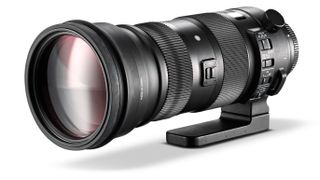
This Sigma Sports lens tips the scales at nearly 3kg. Sigma makes a smaller
and lighter Contemporary 150-600mm lens, but this one is better built. The barrel and hood are metal rather than plastic, and there’s a full set of weather seals.
Optical highlights include two FLD (Fluorite Low Dispersion) elements and fluorine coatings on the front and rear elements. Advanced features include dual autofocus modes, one of which gives priority to manual override,
plus dual-mode stabilization for static and panning shots.
All aspects of image quality are excellent, throughout the entire zoom range. Autofocus is very fast, and the stabilizer works very well in both static and panning modes. It’s a fabulous super-telephoto zoom with suitably ‘sporty’ performance. Relatively big and heavy, especially compared with the Tamron 150-600mm, but this wins with superb performance and image quality, plus a rugged construction.
Best lens for sport photography: Sony
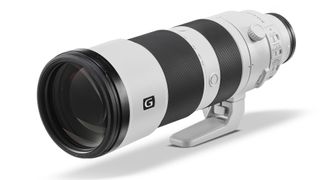
We’ve been impressed by the Sony FE 100-400mm f/4.5-5.6 G Master OSS super-tele zoom for E-mount mirrorless cameras, but the newer 200-600mm really boosts telephoto reach, with only a minimal narrowing of the aperture rating. It’s also considerably less expensive.
Handling is excellent, with a switchable triple-mode optical stabilizer, an autofocus range limiter, and customizable AF-on/AF-lock buttons. Unusually for this type of lens, the overall physical length remains fixed throughout the zoom range.
The Direct Drive Super Sonic Motor autofocus system is fast, accurate, and ultra-quiet. The optical stabilizer works best in conjunction with in-body stabilizers featured in recent Sony cameras, and sharpness is both scintillating and consistent.
Picking up the baton from Sony’s FE 100-400mm G Master, this lens has similarly refined handling and delivers scintillating performance and image quality.
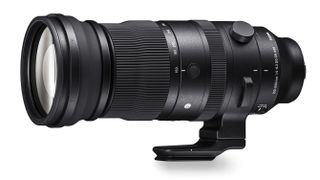
A retooling of the already excellent DSLR lens, the Sigma 150-600mm f/5-6.3 DG DN OS Sports is the complete package for Sony and Leica L shooters. Pairing superb internal optics with an all-around excellent, weather-sealed build, this heavy-duty zoom lens is a big customer, but is really the only game in town for 150-600mm as far as users of the aforementioned mounts are concerned.
Of course, that wouldn't matter if the lens itself was no good. Fortunately, it's excellent. The optical path is a little different from the DSLR version, including 25 elements arranged in 15 groups, and it produces impressive sharpness throughout the entirety of the zoom range. There's some inevitable fall-off in the corners, but not enough to worry about, and it's the sort of thing that will be hidden anyway when you're shooting with a shallow depth of field.
The autofocus is excellent, though you'll need to make sure your camera is set up in the optimal way to take advantage of it. The build quality of the lens is also impressive – while no one is going to pretend this is a lightweight lens, it handles well, with tactile zoom and focus rings and a series of on-body controls for functions like AF speed, stabilization intensity, and in a new addition for the mirrorless version, Zoom Torque control to adjust the resistance of the zoom ring.
This is an all-around excellent lens that's absolutely worth the money for E-mount and L-mount users. See our full Sigma 150-600mm f/5-6.3 DG DN OS Sports review.
Best lens for sport photography: Nikon
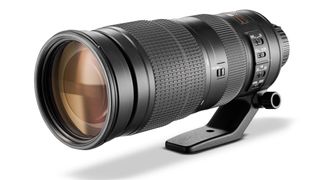
Nikon has long made an Nikkor AF-S 80-400mm f/4.5-5.6G ED VR lens – but, while it delivers excellent image quality, the focal length is relatively limited, and it’s relatively pricey. This newer 200-500mm zoom is more affordable and packs in smart additional features. These include a constant-aperture design, and an electromagnetically controlled diaphragm that ensures greater exposure consistency in rapid-fire shooting.
Uprated VR (Vibration Reduction) is good for 4.5 stops and adds a ‘Sport’ mode for improved stability while tracking moving subjects.
In our lab tests it showed good levels of sharpness remain impressively consistent throughout the entire zoom range, and overall image quality is of a high standard. Autofocus and stabilization systems work quickly and effectively.
The maximum focal length falls a little short compared with Nikon-mount Sigma and Tamron 150-600mm zooms but performance levels are very good.

Nikon very much sees this as the Z-mount successor to its popular AF-S 200-500mm f/5.6E ED VR F-mount super-telephoto lens for DSLRs. On sale from August 2023, we haven't had a chance to test this impressive-looking lens as yet. However, as it is priced very sensibly - and with not obvious alternative for affordable sports photography for the Nikon Z mirrorless camera user - this lens is definitely worth waiting for, or even pre-ordering so you get it as soon as it gets in stock!

This Sigma Sports lens tips the scales at nearly 3kg. Sigma makes a smaller
and lighter Contemporary 150-600mm lens, but this one is better built. The barrel and hood are metal rather than plastic, and there’s a full set of weather seals.
Optical highlights include two FLD (Fluorite Low Dispersion) elements and fluorine coatings on the front and rear elements. Advanced features include dual autofocus modes, one of which gives priority to manual override,
plus dual-mode stabilization for static and panning shots.
All aspects of image quality are excellent, throughout the entire zoom range. Autofocus is very fast, and the stabilizer works very well in both static and panning modes. It’s a fabulous super-telephoto zoom with suitably ‘sporty’ performance. Relatively big and heavy, especially compared with the Tamron 150-600mm, but this wins with superb performance and image quality, plus a rugged construction.

Tamron’s original 150-600mm was a good lens, but the newer G2 edition is a major upgrade. Two additional Low Dispersion elements are fitted and secondary nano-structure coatings are applied, along with better weather-seals and a fluorine coating on the front element.
New and improved VC (Vibration Compensation) is rated at 4.5 stops, with three operating modes instead of just one. These include static and panning options, plus a mode for tracking erratically moving subjects, The autofocus system is faster,
and a new flex zoom lock can be engaged at any focal length.
Everything works well, especially the revamped autofocus and stabilization systems, and handling is very refined. Outright sharpness is a little lacking in the short to medium zoom sector.
Nearly a kilogram lighter than the Sigma 150-600mm Sports lens the Tamron is more comfortable for prolonged periods of handheld shooting. T
Best lens for sport photography: Fujifilm

There aren't lots of options for supertelephoto lenses for the Fujifilm X-range of cameras - but this is the best all-round choice. Thanks to the sensor size, you effectively get It comes with a string of letters after its name, denoting a physical aperture ring, a linear motor autofocus system, optical image stabilisation and a weather-resistant construction – ticking pretty much all of the boxes on a Fujifilm photographer’s wishlist.
The lens is beautifully engineered, with a high-precision feel to all its controls, and no hint of zoom creep. The optical path includes five ED (Extra-low Dispersion) elements, plus a Super ED element.
The autofocus system’s dual linear stepping motors enable very fast performance, and the five-stop stabiliser is highly effective.
This high-performance zoom comes up trumps on Fujifilm X-series cameras, delivering excellent performance. The APS-C format boosts the maximum telephoto reach.
Best lens for sport photography: Pentax
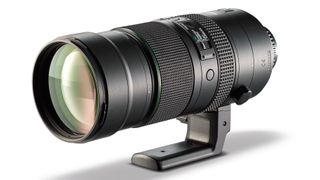
Pentax designed this full-frame compatible lens at a time when the company only made APS-C format DSLRs (where it gives an effective focal range of 230-690mm). The decision has come good with the subsequent launch of Pentax’s K-1 full-frame DSLRs.
There’s plentiful autofocus finery with both auto and manual priority ‘Quick Shift’ modes, plus an AF preset facility and four customizable buttons around the middle of the lens.
Other attractions include a tough, weather-sealed construction, HD coatings to reduce ghosting and flare, and a ‘super protect’ coating on the front element.
Autofocus speed is a little pedestrian compared with other lenses on test. Sharpness drops off rather noticeably at the long end of the zoom range – a situation that isn’t helped by the lens’s reliance on in-camera stabilization.
It’s a high-tech lens that’s ideal for both APS-C and full-frame Pentax DSLRs, but it’s pretty pricey and sharpness could be better, especially towards the long end.
Best lens for sport photography: Micro Four Thirds
The Micro Four Thirds mount is used on Olympus, OM Systems cameras - and on some Panasonic and Blackmagic cameras too.
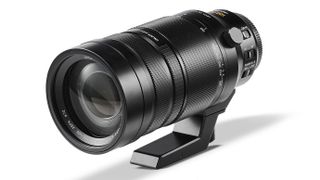
Like the Fujinon 100-400mm lens, this Panasonic is designed for crop-sensor cameras, but this time of the Micro Four Thirds variety. As such, the size of the image sensor enables an even smaller, lighter construction, along with a 2x focal length multiplier that boosts the effective zoom range to a humungous 200-800mm.
Credentials include Leica backing, aspherical elements, and optical image stabilization, which can work in tandem with the in-body stabilizers of various MFT cameras. The optical path includes two ED (Extra-low Dispersion) elements, one aspherical ED element, and one Ultra ED element.
In our tests, we found that the autofocus is fast and accurate
and image stabilization works well, although it lacks a switchable
panning mode. Optical performance is highly impressive all-round.
Weighing in at under a kilogram, the Panasonic is well-balanced on MFT bodies. Performance and image quality are impressive in all respects.





